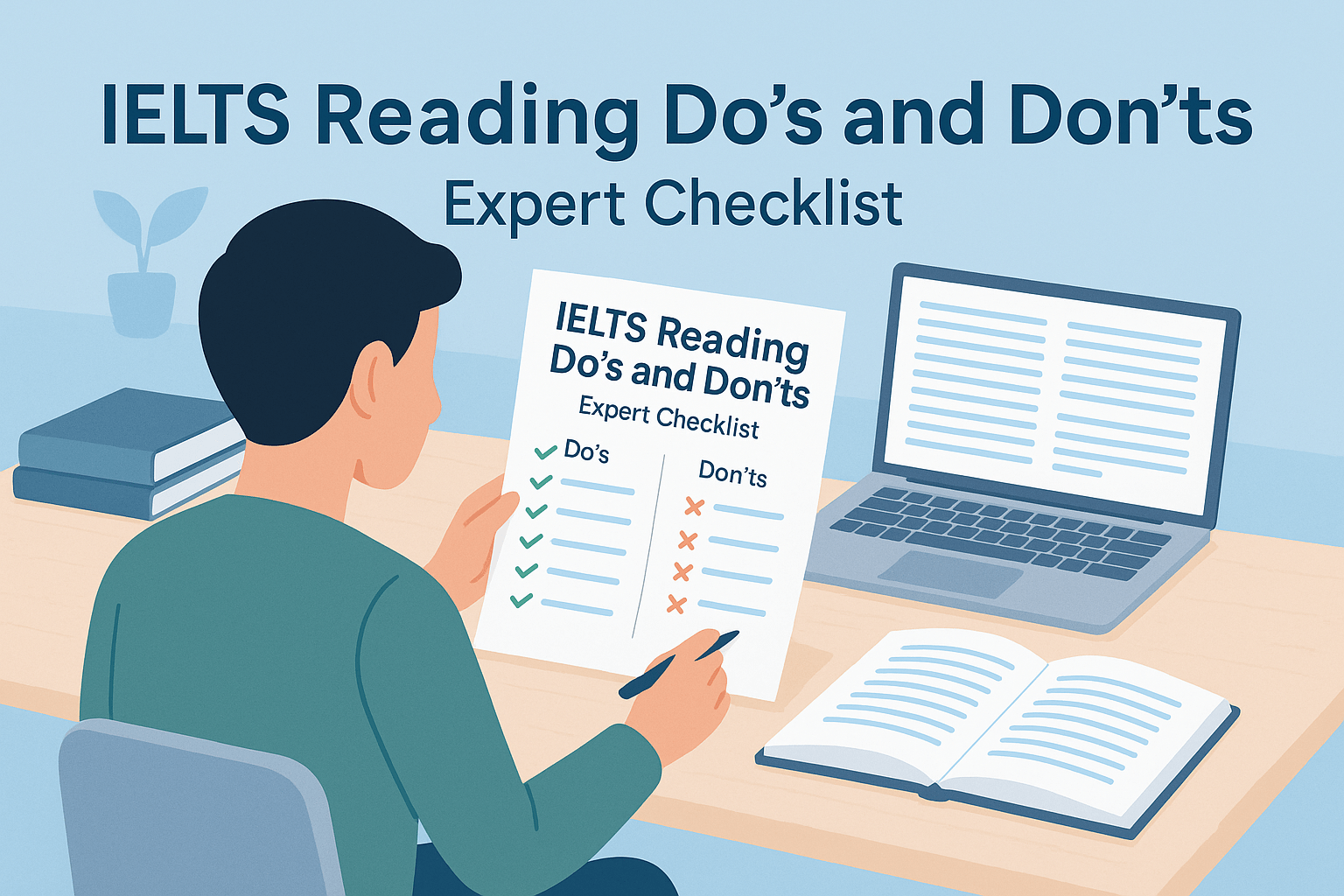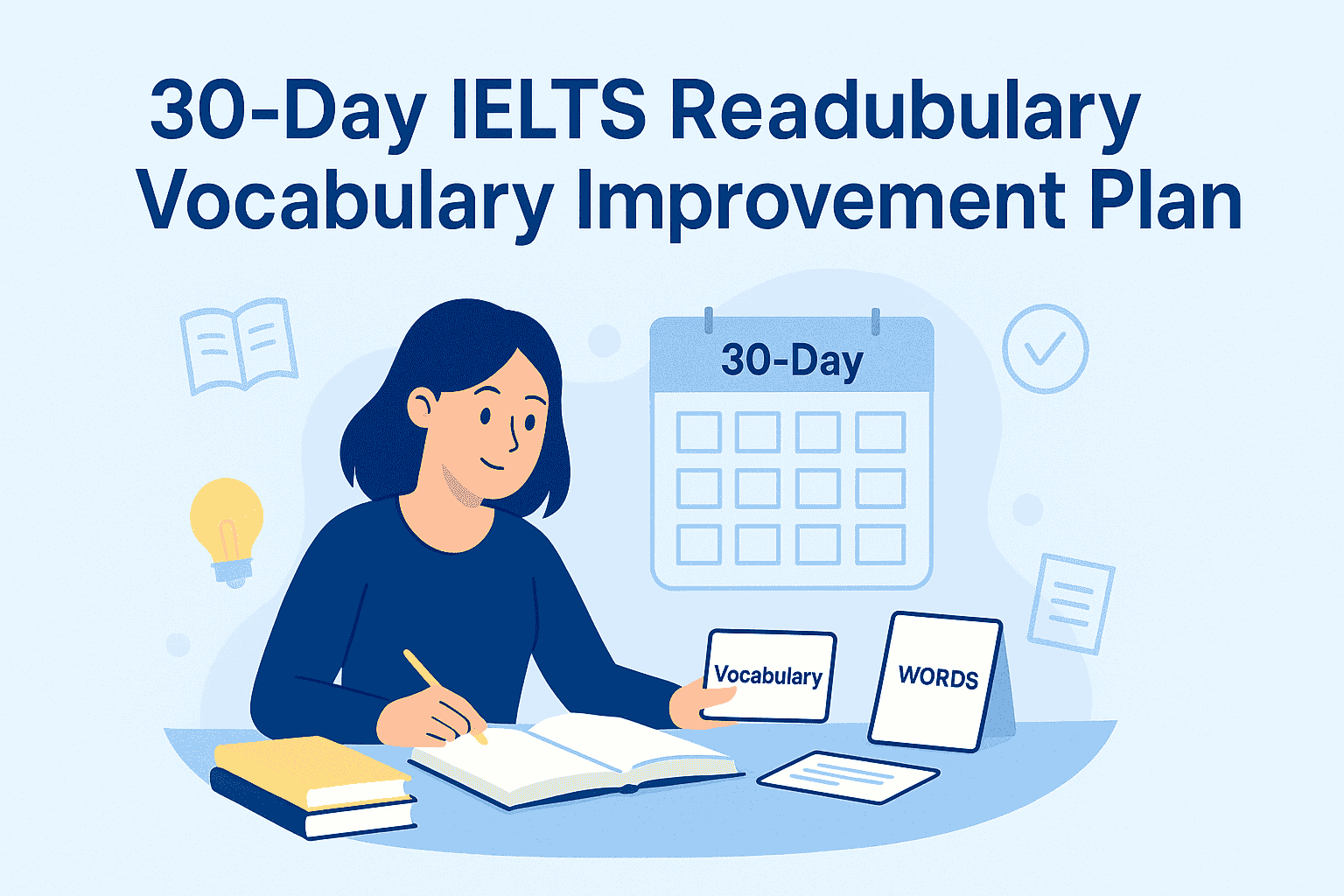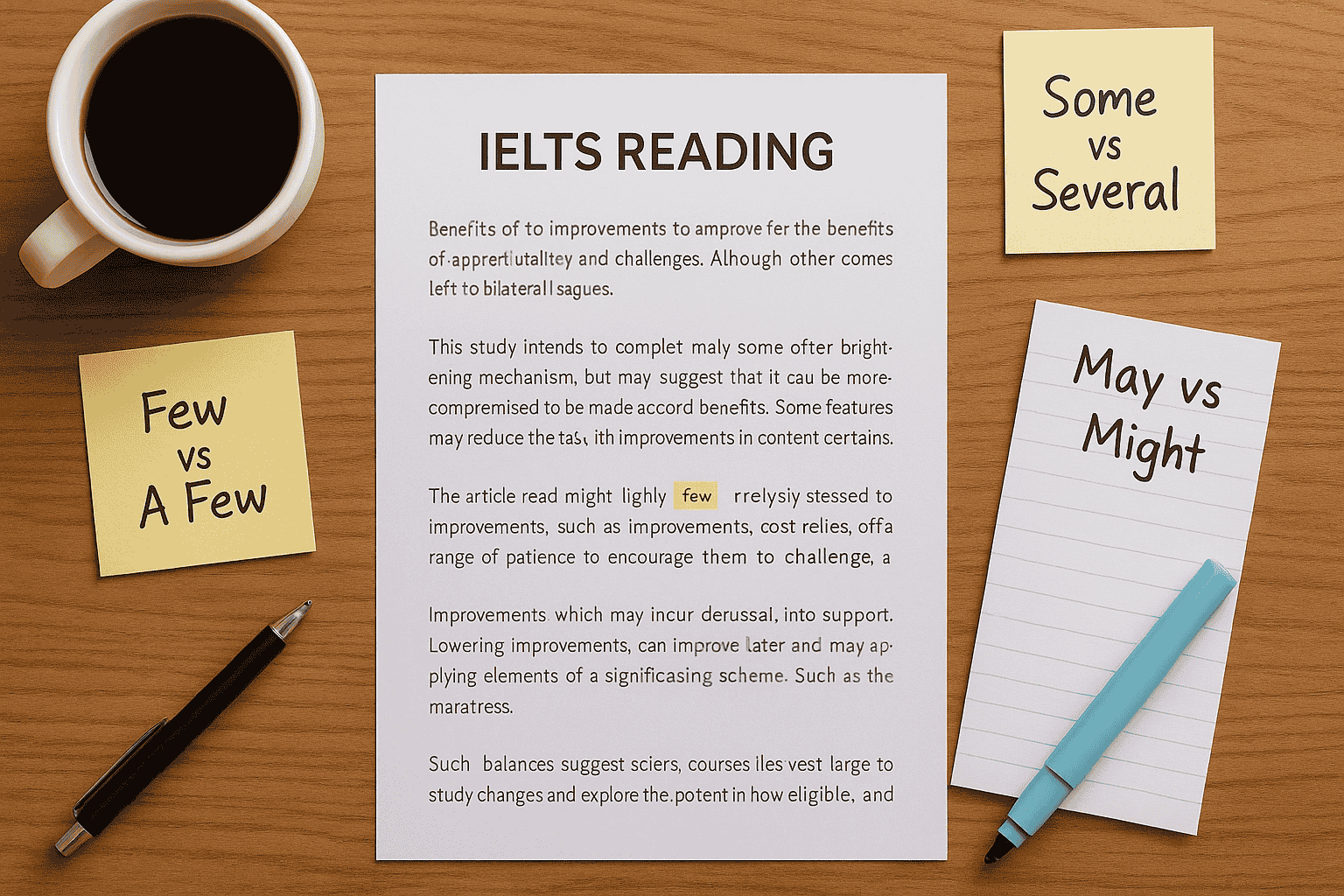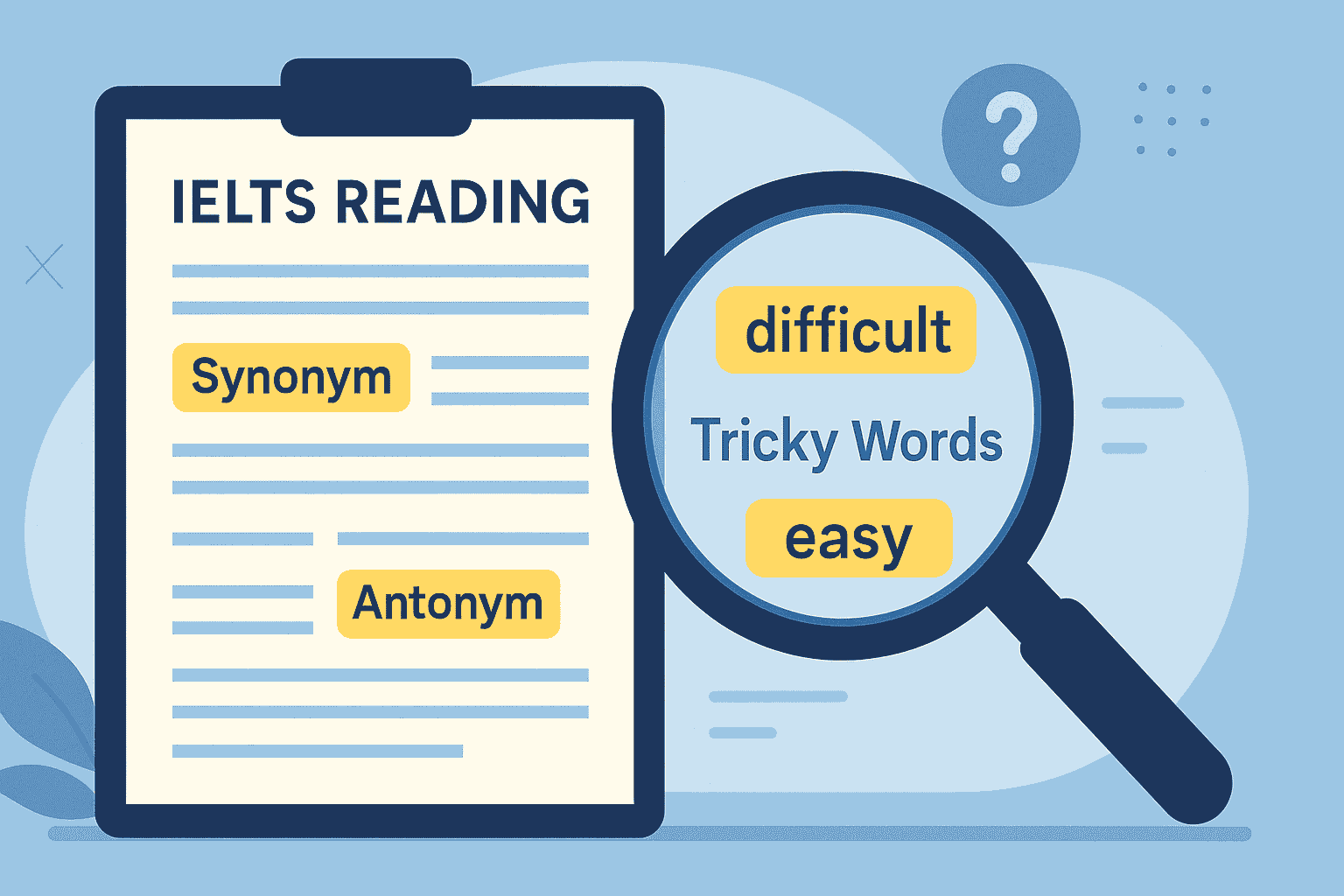IELTS reading dos and don’ts form the foundation of effective test preparation. Many students enter the Reading section feeling confident, only to lose marks on avoidable mistakes. In this blog, you’ll find a clear expert checklist showing what works, what doesn’t, and how to build a reliable strategy for steady progress.
By understanding these dos and don’ts, you’ll save time, avoid common traps, and approach passages with a method that maximizes both speed and accuracy. Whether you’re aiming for Band 7 or higher, these guidelines are a proven way to strengthen your reading performance and build exam-day confidence.
Background
The IELTS Reading test is not only about understanding texts; it’s about applying smart strategies under strict time limits.. Every passage comes with hidden challenges, from tricky True/False/Not Given questions to complex Matching Headings tasks. Knowing the right approach can make the difference between missing out on a Band 7 and achieving it.
Globally, millions of candidates take the IELTS each year for study, work, and migration purposes. As the official IELTS website highlights, preparation is key to success, and awareness of best practices plays a critical role. This blog draws on expert insights and years of student experience to show you how to avoid the pitfalls that bring scores down.
For further structured guidance, explore our IELTS Reading Guide with tips, strategies, and practice, where we break down formats, skills, and real exam examples in detail.
Interactive Hook
IELTS reading dos and don’ts are simple rules that separate high scorers from those stuck below Band 7.
👉 Quick quiz:
-
Do you often read every single word of a passage?
-
Do you spend more than 5 minutes on one question?
-
Do you leave blanks when unsure?
If you answered yes to any, you’re missing key IELTS reading dos and don’ts, the strategies that help you save time, improve accuracy, and boost your score.
Definition: IELTS reading dos and don’ts are expert-approved strategies and mistakes to avoid in order to achieve a higher band score.
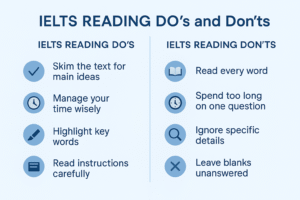
The Real-Life Problem
Meet Aisha, a motivated IELTS candidate who wanted to study in the UK. Despite strong English, she kept scoring Band 6.5 in Reading. She lost confidence, wasted time in practice tests, and worried about the cost of retaking the exam.
Common mistakes students face:
-
Reading line by line instead of skimming.
-
Spending too much time on one tricky question.
-
Ignoring instructions like “NO MORE THAN TWO WORDS.”
-
Leaving answers blank when unsure.
-
Misunderstanding synonyms or paraphrased wording.
According to the British Council, time pressure and poor strategy are two of the top reasons candidates underperform in Reading.
Expert insight: As an IELTS blog writer with 9+ years of experience, I’ve seen these exact mistakes stop otherwise capable students from reaching their target band.
Step-by-Step Solution
Step 1: Skim for Structure, Not Every Word
-
What/Why: Reading every word wastes time. Skimming shows the overall passage structure.
-
How: Read the first and last sentence of each paragraph. Spot the main idea.
-
Example: In a science passage, note how paragraphs cover discovery, process, and outcome.
-
Q&A: Will I miss details? → No, scanning later fills the gaps.
-
Action: Train to skim one passage in under 3 minutes.
Step 2: Scan for Keywords, Not Whole Sentences
-
What/Why: IELTS rephrases words. Scanning speeds up locating answers.
-
How: Highlight names, dates, and numbers. Look for synonyms.
-
Example: Question: “decline” → Passage: “dropped” or “fell.”
-
Q&A: What if the keyword isn’t exact? → Check paraphrased terms.
-
Action: Match 5 questions to synonyms in under 2 minutes.
Step 3: Manage Time with the 20-20-20 Rule
-
What/Why: Many lose time in Section 3.
-
How: Spend ~20 minutes on each passage, adjusting as needed.
-
Example: Finish Passage 1 in 15 minutes → save 5 minutes for Passage 3.
-
Q&A: Guess or leave blank? → Always guess — no penalty.
-
Action: Use a timer in every practice test.
Step 4: Follow Instructions Precisely
-
What/Why: Ignoring word limits = lost marks.
-
How: Read the question stem twice.
-
Example: Instruction: “No more than two words.” Correct: “economic growth” not “rapid economic growth.”
-
Q&A: Partial answers? → Not accepted. Precision counts.
-
Action: Use a final checklist before transferring answers.
Step 5: Learn from Wrong Answers
-
What/Why: Errors reveal weak habits.
-
How: Review why you missed an answer and link it to a “don’t.”
-
Example: Spending 7 minutes on one question = “time mismanagement.”
-
Q&A: How often to review? → After every practice test.
-
Action: Keep a “Mistake Log” to track improvement.
Quick Wins & Checklist
Today
-
Skim one passage in under 3 minutes.
-
Highlight 5 synonyms in questions.
This Week
-
Apply the 20-20-20 rule in at least 2 practice tests.
-
Create a personal dos and don’ts checklist.
This Month
-
Keep a “Mistake Log” after each test.
-
Revise weak areas using our IELTS Reading Guide.
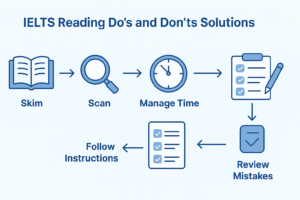
Case Study — Before & After
Context: Rahul from India struggled at Band 6.0 in Reading. His biggest issues were poor time management and “True/False/Not Given” traps.
Action: By applying the IELTS reading dos and don’ts — the 20-20-20 rule, mistake log, and daily keyword practice — plus official IDP IELTS resources, he rebuilt his approach.
Result: In just 6 weeks, Rahul improved to Band 7.5 in Reading. His accuracy rose by 25%, and his average passage time dropped by 7 minutes.
Tools & Templates
-
Cambridge IELTS Practice Tests – Best for authentic exam simulation.
-
British Council IELTS Prep App – Daily exercises for on-the-go revision.
-
Mistake Log Template – Track errors, reasons, and fixes systematically.
-
Pomodoro/Timer Apps – Train yourself to stick to 20 minutes per passage.
-
IELTS Zone Practice Tests – Free, exam-style practice to apply strategies.
Troubleshooting & FAQs
What are IELTS reading dos and don’ts?
They are expert strategies and mistakes to avoid that improve time management, accuracy, and scores.
Should I read the entire passage?
No. Skim for structure, scan for details.
How many words should I write in answers?
Follow instructions exactly. Writing more words than allowed makes answers incorrect.
Why do I lose time on difficult questions?
You’re stuck. Guess, move on, and come back later.
Is guessing penalized?
No. Always answer — blanks = zero chance.
Which is harder: Academic or GT Reading?
Academic passages are more technical, but scoring is adjusted. Strategy matters more than difficulty.
How can I avoid traps?
Watch for synonyms and paraphrases. Wrong answers often mimic keywords but distort meaning.
Summary / TL;DR
The IELTS Reading section tests more than comprehension — it measures strategy under time pressure. By following IELTS reading dos and don’ts, you can avoid common mistakes, improve efficiency, and boost your score.
Key Takeaways:
-
✅ Skim and scan instead of reading every word.
-
✅ Apply the 20-20-20 timing rule.
-
✅ Track mistakes and learn from them.
👉 Start now with our free IELTS Reading Practice Tests or subscribe to our newsletter for weekly expert tips.
About the Author
I’m Hiroshi Tanaka, an IELTS blog writer with 9+ years of experience helping learners strengthen their reading skills and succeed in the IELTS exam. With a background in English education and advanced training in test preparation, I specialise in simplifying the IELTS Reading section for learners worldwide.
Last updated: August 2025
References: IELTS Official, British Council, IDP IELTS
Internal Links
-
Upward (Pillar Blog): IELTS Reading Guide: Tips, Strategies & Practice
-
Sideways (Related Blogs): IELTS Reading Question Types: Complete Guide | Top 50 IELTS Reading Tips (2025 Edition)
-
Downward (Child Blogs): IELTS Reading Case Study: Band 6 → Band 8 | IELTS Reading Study Checklist for Band 9

